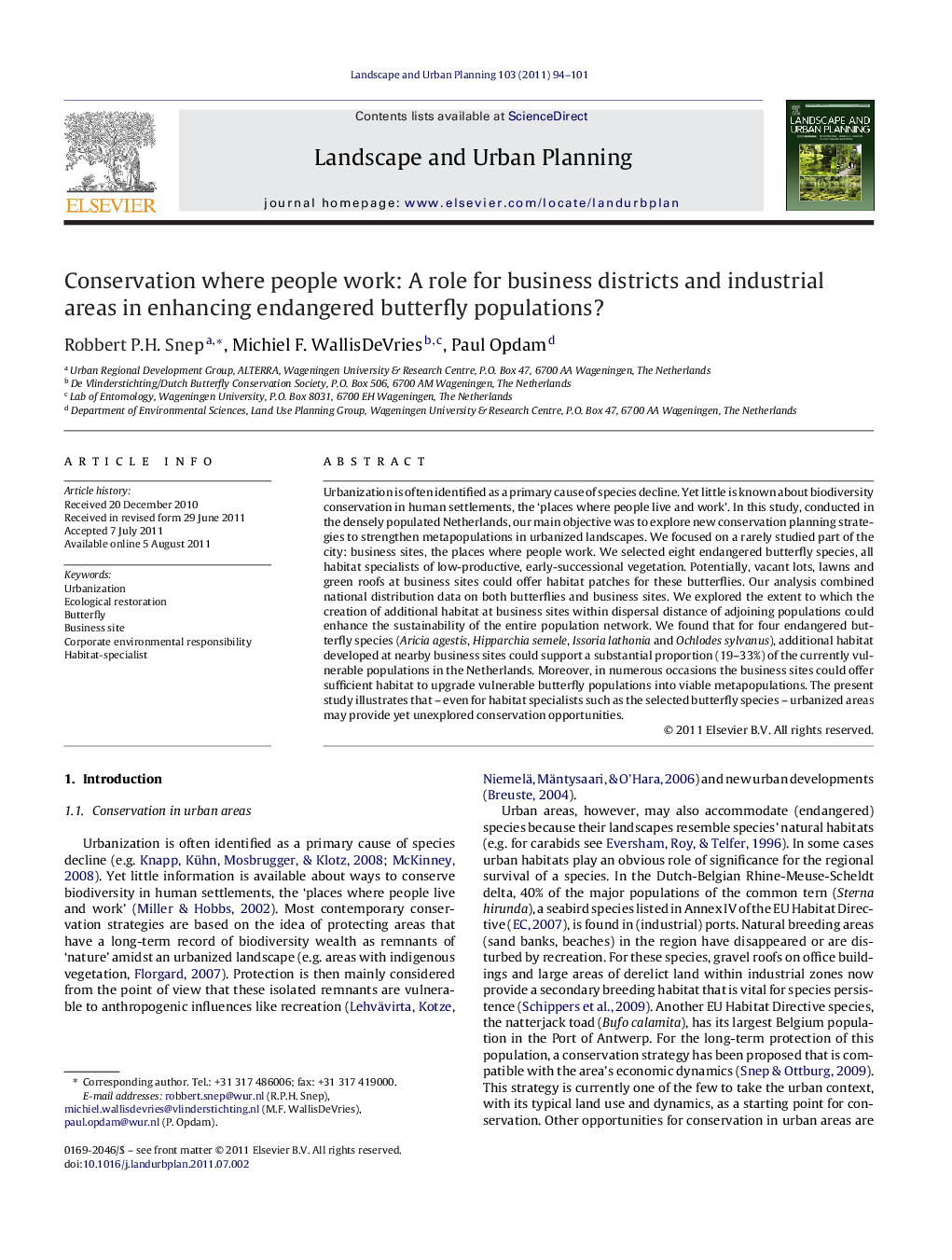| Article ID | Journal | Published Year | Pages | File Type |
|---|---|---|---|---|
| 1049619 | Landscape and Urban Planning | 2011 | 8 Pages |
Urbanization is often identified as a primary cause of species decline. Yet little is known about biodiversity conservation in human settlements, the ‘places where people live and work’. In this study, conducted in the densely populated Netherlands, our main objective was to explore new conservation planning strategies to strengthen metapopulations in urbanized landscapes. We focused on a rarely studied part of the city: business sites, the places where people work. We selected eight endangered butterfly species, all habitat specialists of low-productive, early-successional vegetation. Potentially, vacant lots, lawns and green roofs at business sites could offer habitat patches for these butterflies. Our analysis combined national distribution data on both butterflies and business sites. We explored the extent to which the creation of additional habitat at business sites within dispersal distance of adjoining populations could enhance the sustainability of the entire population network. We found that for four endangered butterfly species (Aricia agestis, Hipparchia semele, Issoria lathonia and Ochlodes sylvanus), additional habitat developed at nearby business sites could support a substantial proportion (19–33%) of the currently vulnerable populations in the Netherlands. Moreover, in numerous occasions the business sites could offer sufficient habitat to upgrade vulnerable butterfly populations into viable metapopulations. The present study illustrates that – even for habitat specialists such as the selected butterfly species – urbanized areas may provide yet unexplored conservation opportunities.
Graphical abstractFigure optionsDownload full-size imageDownload as PowerPoint slideHighlights► In the Netherlands, populations of endangered butterflies often occur in the direct neighborhood of business districts and industry areas. ► Due to their land use, business sites (potentially) offer room to create habitat for butterflies of pioneer vegetations, e.g. at vacant lots and green roofs. ► From our analysis, it appears that creating extra habitats at business sites may support 19–33% of the vulnerable populations of 4 Dutch Red List butterfly species. ► Contrary to other studies, we recognize (yet unexplored) options to enhance habitat specialists – such as butterflies of early-successional vegetation – in city environments. ► This study links conservation planning with business life, referring to the corporate environmental responsibility of companies at business sites.
